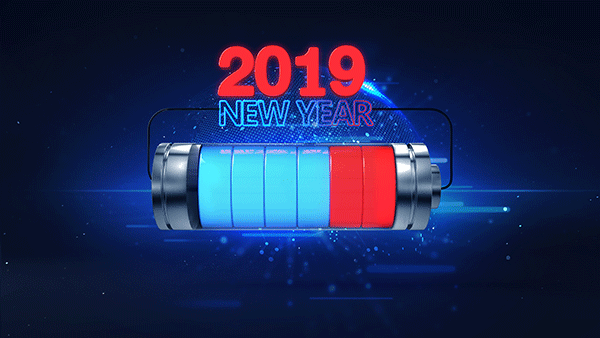Lithium Ion Rechargeable Batteries: Materials, Technology and New Applications
Jun 04, 2019 Pageview:1647
Portable electronic devices have become a part of our modern technological world. Lithium ion rechargeable batteries are used as a source of power supply mainly in portable devices. Let's delve into what makes Lithium ion batteries so special and how Lithium batteries are going to become even better in the future.
What materials make Lithium ion battery?
The Lithium battery is made up of smaller batteries called cells. Each cell is a small chemical manufacturing complex composed of an electrolyte joining the two dissimilar electrodes. Just like any other battery, there's a positive and negative electrode called cathode and anode respectively.
Cathode materials
The cathode or positive electrode of Lithium-ion batteries is made up of state-of-the-art materials that include pure lithium-metal oxides. There are many choices of materials that can be used like lithium cobalt oxide (LiCoO2), Lithium oxido (trioxo) manganese (LiMn2O4), Li (NixMnyCoz) O2], vanadium oxides, olivines (such as LiFePO4), and rechargeable lithium oxides. Layered oxides material containing nickel and cobalt are mostly used in case of Lithium ion batteries. The more uniform the composition is, the better the performance, and the longer the battery life would be.
While some metal oxides show a high stability towards high-voltage range, there are some that shows some limitations. For instance, cobalt's limited availability is an issue. Plus, cobalt is a toxic metal which is the biggest downside for mass manufacturing. Manganese is a low-cost metal with high thermal threshold, yet it shows constraint cycling behavior. Hence, rather than using metals individually, combination of cobalt, nickel and manganese are often used to get the best result and minimize the cons associated with it.
When it comes to Vanadium oxides, they exhibit excellent kinetics and huge capacity. Although, owing to lithium insertion and extraction, vanadium oxide material is likely to become amorphous. This, in turn, limits the cycling behavior. Now, Olivines have the benefit of being nontoxic but they exhibit a moderate capacity. Also, their conductivity is low. Numerous coating techniques have been introduced to compensate the poor conductivity; however it all comes with added processing costs to the battery.
Anode Materials
On the other side, there's another electrode called anode. Anode materials for lithium-ion batteries are graphite, lithium-alloying materials, lithium, intermetallics, or silicon. Lithium appears to be the simplest material but there are concerns with its cycling behavior and dendritic growth, which is responsible to create short circuits. For this reason, carbonaceous anodes are the most preferred anodic material because of its low-cost and highly availability. However, higher charge density in mAh/g of lithium overcomes these carbonaceous anodes. To increase the capacity, scientists make use of carbon nanotubes and novel graphite varieties. Intermetallic compounds and alloy anodes have also shown high capacities but due to considerable volume change, these compounds show poor cycling behavior. Nano-crystalline materials can be used to overcome this volume change.
Electrolytes
The battery is filled with a transport medium the electrolyte so that Lithium ions carrying the battery's charge can flow freely. This electrolyte must be pure and free of water to ensure efficient charging and discharging to prevent a short circuit. Many types of electrolytes can be used, naming as liquid, polymer, and solid-state electrolytes. Mostly, solvent based electrolytes are preferred containing a lithium salt in an organic solvent such as bis (oxalato) borate (LiBC4O8) (LiBOB), Lithium hexafluorophosphate (LiPF?), lithium fluoroalkyl-phosphate Li [PF3 (C2F5)3], or similar. However, the use of organic solvent poses an environmental risk, together with flammability concern, solid polymer electrolytes is a great alternative to improve the safety performance of batteries.
Hence, a suitable combination of negative, positive electrodes materials and electrolyte materials must exist to produce a cost-effective high capacity Li-ion battery.
2019 New Application of Lithium Ion Battery
Lithium-ion batteries have a wide application spectrum. Since these batteries were first launched, there have been countless research and numerous improvements to boost the performance of these batteries. Being a part of our day-to-day modern society, Lithium-ion is a dominant technology. Look at your portable electronic devices - smartphones, laptops, and tablets, hybrid and fully electric cars, it's all Lithium-ion. Since the society is approaching towards less-carbon emission and energy-efficient products, Lithium-ion technology is preferred in the automotive sector. These batteries have potential to store wind and solar energy. A great future is predicted in the modern electric car to reduce carbon dioxide emissions. Meanwhile, ways to recycle Lithium from used batteries has also been considered by experts. As per new research, by 2050, lithium-ion batteries will be the affordable technology to reserve electricity for most applications. One such application is to make sure that energy grids don't experience large fluctuations and enabling customers to manage their bills. These applications are crucial in a world where we heavily relies on intermittent energy sources like wind and solar energy. There's a remarkable increase in use of Lithium-ion batteries for following new applications:
●Power tools
●Portable charger
●Communications equipment
●Wearable devices
●Drones
2019 Demand Trend of Lithium Ion Battery
Lithium-ion batteries have been in use for years. By 2026, Lithium ion battery market is predicted to see a robust growth from USD 36.20 billion in 2018 to USD 109.72 billion, at a CAGR of 13.4%. The fact that Lithium-ion batteries are increasingly being used as a full-battery electric vehicle (BEV) and hybrid power source makes it a perfect choice in automotive industries. Besides, there's an increasing demand of Lithium-ion batteries throughout various application sectors like electronics, wind, military and industrial sector.
Here are some latest demanding trends of Lithium-ion batteries.
●High nickelization of cathode materials
●Emphasis on solid-state batteries
●Market of lithium-ion battery production equipment is gaining attention.
●Use of Li-ion battery in hybrid and electric vehicles is worthy of attention.
Conclusion
The world is in a continuous need of efficient rechargeable batteries. Since Lithium-ion batteries are lighter in weight, smaller in size, and provides more energy per volume unit, large number of automobiles, and battery companies are using LIBs. However, researchers of all around the world have been struggling to develop a cutting-edge technology better than Lithium-ion batteries. As the world is proceeding towards an electric future, the next big breakthrough in rechargeable battery technology could be merely around the corner.
- Prev Article: Lithium-Ion Boat Battery Review
- Next Article: Portable lithium battery
Leave Message
Hottest Categories
-
Hottest Industry News
-
Latest Industry News











